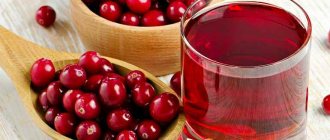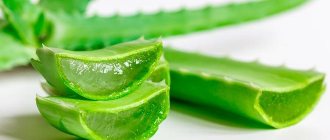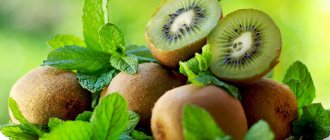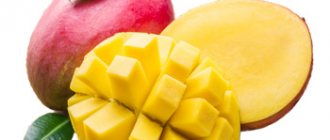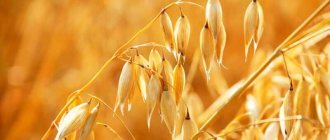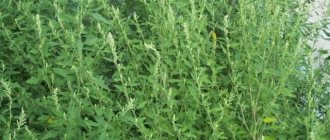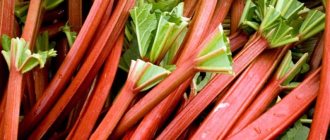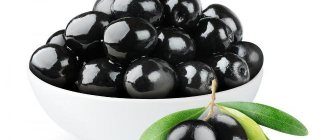Is plum a fruit or a berry?
The plum is a fruit tree that ripens in temperate latitudes. Its fruits are an oblong single-drupe, which is covered with a thin, usually blue skin .
Plum fruits have an oblong shape
Plums are available all year round, but the juiciest ones are available from May to early September. When choosing fruits, follow simple rules:
- give preference to elastic fruits with thick skin, regardless of color - yellow, black, white, red or blue;
- exclude the presence of damaged or immature areas;
- choose fruits grown in natural conditions and not in greenhouses;
- Avoid buying plums that are too soft and covered with a thin shell.
Features of the workpiece
Ripening occurs unevenly, so fruits are collected in 2 or 3 stages. If they want it fresh, they are picked completely ripe. For jam and compote, slightly unripe. Collect in the morning, in cool, dry weather.
Plums can be harvested for the winter: making preserves, compotes, jams, adjika, drying plums.
Fruit selection
Ripening occurs unevenly, so fruits are collected in 2 or 3 stages. If they want it fresh, they are collected fully ripe. For jam and compote, slightly unripe. Collect in the morning, in cool, dry weather.
Plums are available from May to October. You need to choose those that have a rich color and a slightly whitish coating. When purchasing the fruits of this plant in stores and markets, you must:
- Do not buy fruits that are too small or have too thin skins (such products decompose quickly and cannot be stored);
- Give preference to elastic fruits with fairly thick rinds of blooming flowers;
- Avoid purchasing damaged or untreated fruit.
Attention! Avoid buying soft ones, with cuts or dents.
Medicinal and beneficial properties for human health
Almost all parts of the plum are used - flowers, bark, leaves, seeds and ripe fruits. Due to their composition, fresh and dried fruits have the following beneficial properties :
- Memory improvement . Associated with the neutralization of damaged cells.
- Protection of blood vessels and their cleansing from cholesterol plaques . Helps prevent the development of atherosclerosis and lower blood pressure.
- Antipyretic effect when consumed dry.
- Strengthening the immune system thanks to the high content of vitamin C.
- Regulating water-salt balance , removing excess fluid from the body.
- Maintaining eye health and visual acuity, strengthening the mucous membrane.
- Prevention of diseases such as arthritis, heart attack, cancer, asthma .
- Stimulates the gastrointestinal tract , increases appetite, reduces the level of hydrochloric acid in the stomach.
- Protecting the nervous system , normalizing sleep, relieving stress.
- Plum masks are used for cosmetic purposes. They restore skin elasticity and have a good rejuvenating effect.
- Wound healing effect when using a decoction.
- Reduced anxiety , increased serotonin production.
- For iron deficiency anemia .
- Reducing the risk of heart attack .
- Extension of youth and longevity.
Athletes are recommended to include plums in their daily diet . The potassium contained in the composition promotes muscle contraction after active training.
Unripe plums will not bring any particular health benefits. If the taste is too sour, the fruit should be left at room temperature until fully ripe.
Benefits of plums for women
1. Plum contains several fruit acids: citric, malic, oxalic, succinic. Which help regulate the acid-base balance and significantly enhance intestinal functions. Plum can be used in the form of masks. It nourishes and cleanses the skin well.
2. Vitamin P contained in plums regulates and increases the formation of collagen, which promotes skin rejuvenation.
3. Rutin helps reduce the development of cancer cells, i.e., the risk of cervical cancer and breast tumors decreases. It is useful to eat plums during heavy periods, as they contain vitamin K, which regulates blood flow and prevents bleeding from developing.
Energy value and nutrients
The question is often asked: “How many calories are in plums and can they be consumed while on a diet?” The calorie content of plums is on average 42 kilos of calories for every 100 grams (3 pcs). This fruit is a low-calorie product that has excellent cleansing abilities . This feature allows you to answer the exciting question: “Is it possible to lose weight on plums?” Contains proteins, carbohydrates, fiber, calcium, magnesium, iodine and other elements. It should be noted that dried plums (prunes) have more calories than fresh ones - 255 kcal.
Prunes have more calories than fresh plums
The fruits contain a lot of vitamin P, which is of particular value for the body. With its help, the fragility and fragility of capillaries is reduced. The vitamin is retained even after fruit processing.
The beneficial properties of plums are due to their composition:
- Vitamin C . Takes direct part in redox reactions, iron absorption, and the functioning of the immune system.
- Molybdenum.
- Silicon , which is necessary for collagen synthesis.
It is recommended to eat plums separately from other foods and drinks in the first half of the day, at least 30 minutes before meals. In this case, sugar will be used up for the needs of the body, and not stored in reserve. Excess carbohydrates can lead to the accumulation of fat deposits.
A combination of plums with a variety of cereals, fermented milk products, honey and apples is acceptable. You should not eat fruit on an empty stomach or drink it with milk.
In cooking, plums are used to make jam, jam, and aromatic jelly . The fruits are used as a seasoning for dishes, as well as pleasant plum vodka and tart wine.
Chemical composition of red plum
Fruits contain a large amount of vitamins, minerals, and beneficial components necessary for the normal functioning of the body.
Vitamins:
- C - 10 mg;
- PP - 0.6 mg;
- E (TE) - 0.6 mg;
- B5 (pantothenic acid) - 0.2 mg;
- Beta-carotene - 0.1 mg;
- B6 (pyridoxine) - 0.08 mg;
- B1 (thiamine) - 0.06 mg;
- B2 (riboflavin) - 0.04 mg;
- A (RE) - 17 mcg;
- B9 (folic acid) - 1.5 mcg.
Macronutrients:
- Potassium - 214 mg;
- Calcium - 20 mg;
- Phosphorus - 20 mg;
- Sodium - 18 mg;
- Magnesium - 9 mg;
- Sulfur - 6 mg;
- Chlorine - 1 mg.
Microelements:
- Silicon - 4 mg;
- Iron - 0.5 mg;
- Zinc - 0.1 mg;
- Manganese - 0.11 mg;
- Copper - 87 mcg;
- Nickel - 15 mcg;
- Molybdenum - 8 mcg;
- Chromium - 4 mcg;
- Iodine - 4 mcg;
- Fluorine - 2 mcg;
- Cobalt - 1 mcg.
Red plum is valued for its high content of B vitamins, ascorbic acid, potassium, calcium, and phosphorus.
Calorie content of early ripening per 100 grams
The fruit is considered low-calorie. Often included in dietary nutrition. Calorie content is 49 units. Of them:
- Carbohydrates - 9.6 g;
- Proteins - 0.8 g;
- Fats - 0.3 g;
- Water - 86.3 g;
- Dietary fiber - 1.5 g;
- Starch - 0.1 g;
- Organic acids - 1 g;
- Ash - 0.5 g;
- Mono- and disaccharides - 9.5 g.
The calorie content of plums changes during heat treatment - drying, cooking. The nutritional value of dried fruits is slightly higher.
Use during pregnancy: benefits and harms
All pregnant women know that plums and especially prunes help fight stool retention . Women who are expecting a baby are often plagued by constipation. It is enough to eat a few fruits a day to get rid of this problem.
During pregnancy, plum is recommended as a remedy for constipation.
The beneficial properties of plums do not end there. What other benefit is there? The fruit contains important vitamin E, which has a beneficial effect on the placenta and the condition of its blood vessels .
Often pregnant women introduce plums into their diet to reduce bleeding gums. A natural antioxidant allows you to cleanse a woman’s body of free radicals. Masks based on pulp will moisturize the skin and get rid of shallow wrinkles.
The use of steamed prunes in milk is effective against corns and calluses . The product is applied at night. The next morning the skin will soften significantly and after a few sessions the problem will disappear.
The presence of folic acid in plums is of particular value. The water-soluble vitamin is responsible for the absence of defects in the development of the neural tube in the fetus.
Plum pits. Benefits and Applications
Plum pits are very useful as an expectorant. The tincture can be prepared from fruits that are not pitted. This tincture will help cope with back pain and is an effective remedy against the development of cancer.
The most common method of preparing tincture: 0.5 kg. Unpeeled plum fruits are mixed with 2 liters of vodka and infused for 2 weeks. The degree of readiness is determined by the color of the tincture; if a red tint appears, then the medicine is ready for use. Drink the tincture a few drops 2 times a day.
Use in folk medicine for men and women
Traditional healers pay special attention to plums. Most often used:
- a decoction of flowers with a mild laxative effect;
- a decoction of bark and twigs has a pronounced anti-inflammatory, expectorant and astringent effect;
- plum juice for colds;
- An infusion of plum leaves and flowers is effective for inflammation of the bladder, as well as hair loss.
- resin for urolithiasis and rashes on the surface of the skin.
Tea made from plum leaves has become widespread as a folk remedy . Its benefits are manifested in a pronounced sedative, calming effect. With regular use, it will help you relax and relieve accumulated stress.
Plum: negative effects on the body and contraindications
Excessive consumption of plums is dangerous even for a healthy person. Diarrhea, increased acidity in the stomach, and heartburn are often noted . In most cases, harm from fruit is associated with excess in its consumption.
It is unacceptable to consume more than 6 large fruits at one time. Following this simple rule will help avoid negative effects.
People should take special care when consuming plums:
Plum is contraindicated for a certain category of people
- with diabetes and severe obesity due to high sugar levels;
- contraindication during exacerbation of gastritis with increased acidity;
- for systemic inflammatory diseases of joints and muscles , gout, the presence of gallstones;
- individual intolerance ;
- nursing mothers , since eating plums can cause diarrhea and colic in babies. Fruits, both natural and dried, are excluded.
A large amount of plum eaten by children causes intestinal upset, as well as pain in the epigastric region.
Children under 3 years of age are not recommended to eat fresh fruit . Pediatricians allow adding a small amount of plum puree to porridge and cottage cheese.
Before eating, plums should be washed thoroughly. Their skin is always covered with yeast fungi. Do not use fruits with mold or other lesions.
Beneficial properties of red plum for skin
Eating pigmented fruits, such as this fruit, prolongs the youthfulness of the skin. The antioxidants contained in them prevent premature aging, rejuvenate and remove the first signs of aging.
They promote better healing of the skin after damage.
Use in cooking
Red plums are eaten fresh and made into jam, jam, compote and other winter preparations.
A very tasty tkemali sauce was made from them. Add to salads, desserts, baked goods, cocktails and smoothies.
Features of using plum pits
In oriental medicine, products made from seeds are widely used. Plum tincture shows positive results in the treatment of bronchitis, prolonged cough, and the prevention of cancer .
Plum seeds and their kernels are widely used for medicinal purposes.
As with any other stone fruit, plum kernels contain amygdalin. Under the influence of enzymes in the gastrointestinal tract, the substance forms hydrocyanic acid, which in large doses is dangerous to the body. Heat treatment leads to the destruction of harmful substances.
Long-term storage of canned products and compotes made from plums with pits is not recommended. To store fruits, they can be dried or frozen.
Fatty oils are obtained from plum seeds, which are used along with almond oils. They have pronounced antioxidant properties. The oil is characterized by a tart aroma of bitter almonds.
For medicinal purposes, it is not the bones themselves that are used, but their kernels . Ideally, their daily use is recommended, but prior consultation with doctors is necessary. Discussions about their safety often arise around the use of plum seeds.
With reasonable use of this product, it is possible to improve health, improve well-being, and also cleanse the body. Cheerfulness and good mood are guaranteed.
Who among us doesn’t like to eat ripe plums?! Surely there are such people, but these people are, without a doubt, in a clear minority. This fruit is known all over the globe, and it is used in the preparation of a wide variety of dishes. There are several types of plums, and the yellow plum is a very popular one.
There are several varieties of yellow plum. All these are sweet dessert fruits with juicy pulp. For example, fruits of the Vetraz and Alyonushka varieties have excellent qualities. The trees are relatively easy to care for, and they may not grow on the best soil.
Benefits of yellow plum
In addition to the fact that the yellow plum is very tasty, it contains a lot of microelements that are beneficial for our health, helping, for example, to fight extra pounds. However, you need to eat the fruit correctly, otherwise instead of benefit there will be harm. Many doctors recommend that everyone eat plums daily.
The benefits of our fruit are as follows:
- fiber normalizes the functioning of the gastrointestinal tract;
- potassium removes excess fluid;
- vitamins strengthen the immune system;
- useful elements improve the condition of skin, hair and nails;
- pectins remove toxins and waste.
Plums are low-calorie fruits with a low glycemic index. Even if they are sweet, they will not cause an unhealthy rise in blood sugar. They contain healthy amounts of vitamin C, which strengthens the body's defenses and increases the amount of energy iron we absorb from food.
Phenolic compounds in plums such as procyanidin, neochlorogenic acid, and quercetin appear to reduce inflammation and help neutralize oxygen damage to cells. Tests have shown that yellow and green plums contain less phenols than red ones.
The fruit is also useful because it relieves dyspepsia and flu. The antioxidant capacity helps in the treatment of osteoporosis, macular degeneration, cancer, diabetes and obesity. Eating the fruit helps maintain healthy cholesterol levels; good for cardiovascular health, cognitive health, immune health and cellular health; electrolyte balance, nervous system.
1 Antioxidants. Plums contain vitamin C and phytonutrients such as lutein, cryptoxanthin, zeaxanthin, neochlorogenic acid and chlorogenic acid. These elements have strong antioxidant properties that help prevent damage caused by oxygen radicals called superoxide anion radicals. The phenols contained in plums also enhance the protection of essential fats in neurons and cell membranes from any damage caused by oxidative stress.
2 Obesity. Plum extracts are valuable for treating obesity and other obesity-related complications. Studies have shown that consuming stone fruits helps fight metabolic syndrome due to the presence of bioactive compounds. Flavonoids and phenolic components like anthocyanins, chlorogenic acids, quercetin and catechins present in plums have anti-tuberculosis and anti-inflammatory effects on various cells of the body, including fat cells, and also help prevent obesity-related problems such as cholesterol disorders, diabetes and cardiovascular diseases diseases.
3 Osteoporosis. Consumption of dried plums has anabolic and anti-inflammatory effects, which helps maintain healthy bones. Flavonoids like caffeic acid and rutin present in plums help suppress bone breakdown and prevent osteoporosis in postmenopausal women, etc. Polyphenols along with potassium content in dry plums promote bone formation, enhance bone density and prevent bone loss, to caused by ovarian hormone deficiency. According to tests, regular consumption of dried plums helps restore bone density that is already lost due to aging.
The benefits of plums for the human body and chemical composition
1. The content of healing vitamins C and P in plums is not record high. But plums contain a large amount of carotenoids, and a very large amount of riboflavin.
2. Riboflavin or B2 (in addition, it is also found, for example, in oatmeal, brewer’s yeast, milk and meat; riboflavin has also been found in black bread, mushrooms, etc.) - this is a very important vitamin for humans, which is not not only fights wrinkles , but also ensures the normal functioning of many systems in the body.
3. Of the mineral salts that are found in plums, potassium is the first to be noted. The amount of this essential element is the same as in raspberries or cherries, that is, up to approximately 214 mg per 100 grams. healing and tasty berries.
4. Doctors found a particularly large amount of the valuable element, potassium, not in fresh plums, but in prunes. Potassium is important for the normal functioning of blood vessels , absolutely all muscle groups, and capillaries.
5. Potassium salts in a powerful tandem with another substance - tannin, very successfully prevent the formation of so-called uric acid, which does not bring anything good to the body, but only clogs it.
So, here it is worth thinking about the following fact: they say that due to the property of plums to fight uric acid deposits, eating the product will help patients with gout, urolithiasis, and diseases of the excretory system.
6. Plum contains sodium and vitamins PP necessary for human life. They say that thanks to them, the walls of blood vessels are steadily strengthened. Coumarins are simply excellent and reduce blood pressure at the highest level and fight thrombosis.
7. In addition, anthocyanins, which are found in abundance in the top layer of plum skin, are considered very effective antioxidants . For example, they improve circulation in the vessels of the retina .
8. The plant contains a large amount of iron. There is folic and nicotinic acid. Iodine, calcium, one of the most useful elements, vitamin K are also found in plums. Organic acids are present.
9. Magnesium, very well known among doctors, reduces nervous tension, fights fatigue , controls appetite, and helps the heart function. Zinc acts as a strong antioxidant and protects against cancer . Phosphorus is involved in protein synthesis and helps the smooth functioning of nerves.
Plum for women
Contraindications
Plums have contraindications. They are as follows:
- It is not recommended to eat a lot of plums for those suffering from diabetes and excess weight.
- This fruit is contraindicated for those with a history of rheumatism and gout, because plums remove fluid.
- Increased stomach acidity is also an obstacle to consuming the described fruit.
- It is not recommended for young children to eat a lot of plums (this can cause intestinal colic) and nursing women. The fruit causes increased gas formation.

